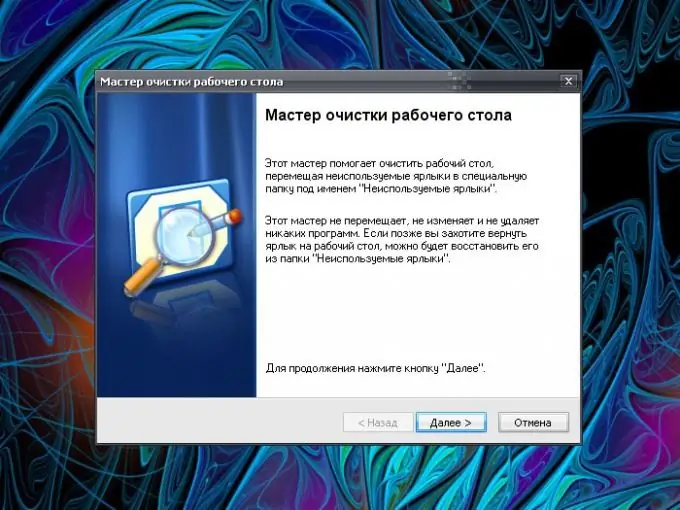It is customary to call spam annoying and unnecessary advertising mailing that comes to e-mail, ICQ or to the phone in the form of sms. More broadly, the word "spam" can be understood to mean "clog" or "interfere". If you have a lot of files and folders on your desktop that you don't use, there are several ways to clean up and remove spam from your screen.

Instructions
Step 1
Almost any application installed on a computer creates a shortcut on the desktop. Novice users sometimes do not remove shortcuts, fearing that this may negatively affect the operation of the PC. Also, if the desktop is the default save directory for an application, many files can accumulate on it.
Step 2
A distinctive feature of any label is an arrow in the lower left corner. If you have a lot of unnecessary shortcuts on your desk, you can use one of several options. The first is to simply delete them. To do this, select a group of shortcuts by holding down the left mouse button and press the Delete key. Confirm the operation with the Enter key or with the "Yes" button in the query window. The program itself or the folder referred to by the shortcut remains on the computer. Removing the icon from the desktop does not affect anything.
Step 3
You can use the "Desktop Cleanup Wizard" component. Right-click in an empty space on the desktop and select Properties from the context menu. The "Properties: Display" dialog box will open, go to the "Desktop" tab and click on the "Desktop settings" button. In the additional window, activate the General tab and click the Clear Desktop button.
Step 4
The "Wizard" will start. You will see how often you access a particular program or folder. Mark the boxes opposite the items that you want to hide with a marker and confirm your actions. All checked icons will be moved to the "Unused Shortcuts" folder on the desktop.
Step 5
Another option: remove the shortcuts for those applications that you do not use, and place the icons of frequently called on the Quick Launch bar. It is located to the right of the Start button on the taskbar. Click on the taskbar with the right mouse button, expand the "Toolbars" item in the context menu and make sure that there is a marker next to the "Quick Launch" sub-item.
Step 6
To place an application icon on the Quick Launch, select the required file and, while holding down the left mouse button, move it to the taskbar. When it is in place, just release the mouse button. To expand the area of the quick launch panel, right-click on the taskbar and remove the marker from the "Dock taskbar" item in the drop-down menu, adjust the size of the panel and re-pin it.
Step 7
It is also better not to store regular files on the desktop. Firstly, they take up space, cluttering the screen, and secondly, if you have to urgently reinstall the operating system, they will be lost. Create a folder on any hard drive and move the files into it. To do this, use a right-click on the file icon and the "Cut" (or "Copy") and "Paste" commands from the context menu.






